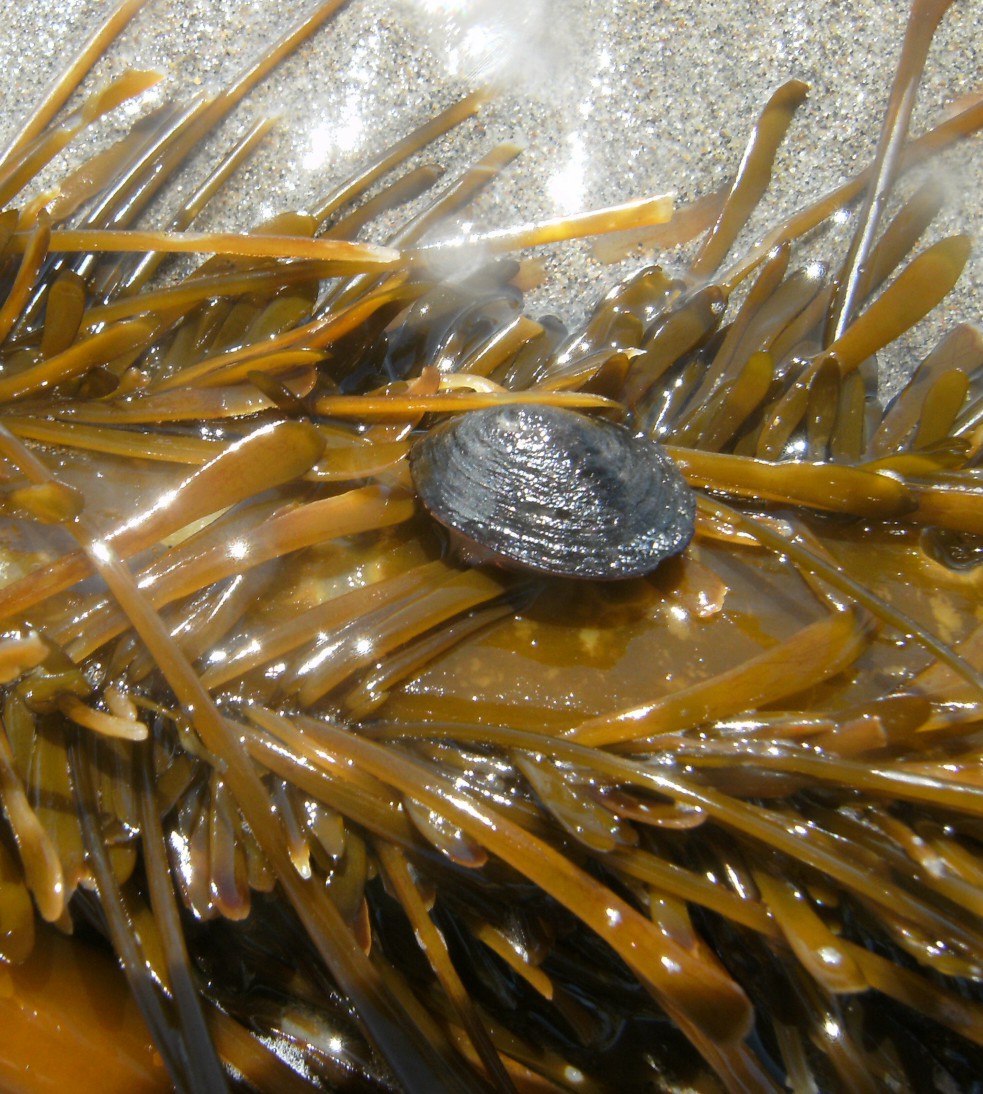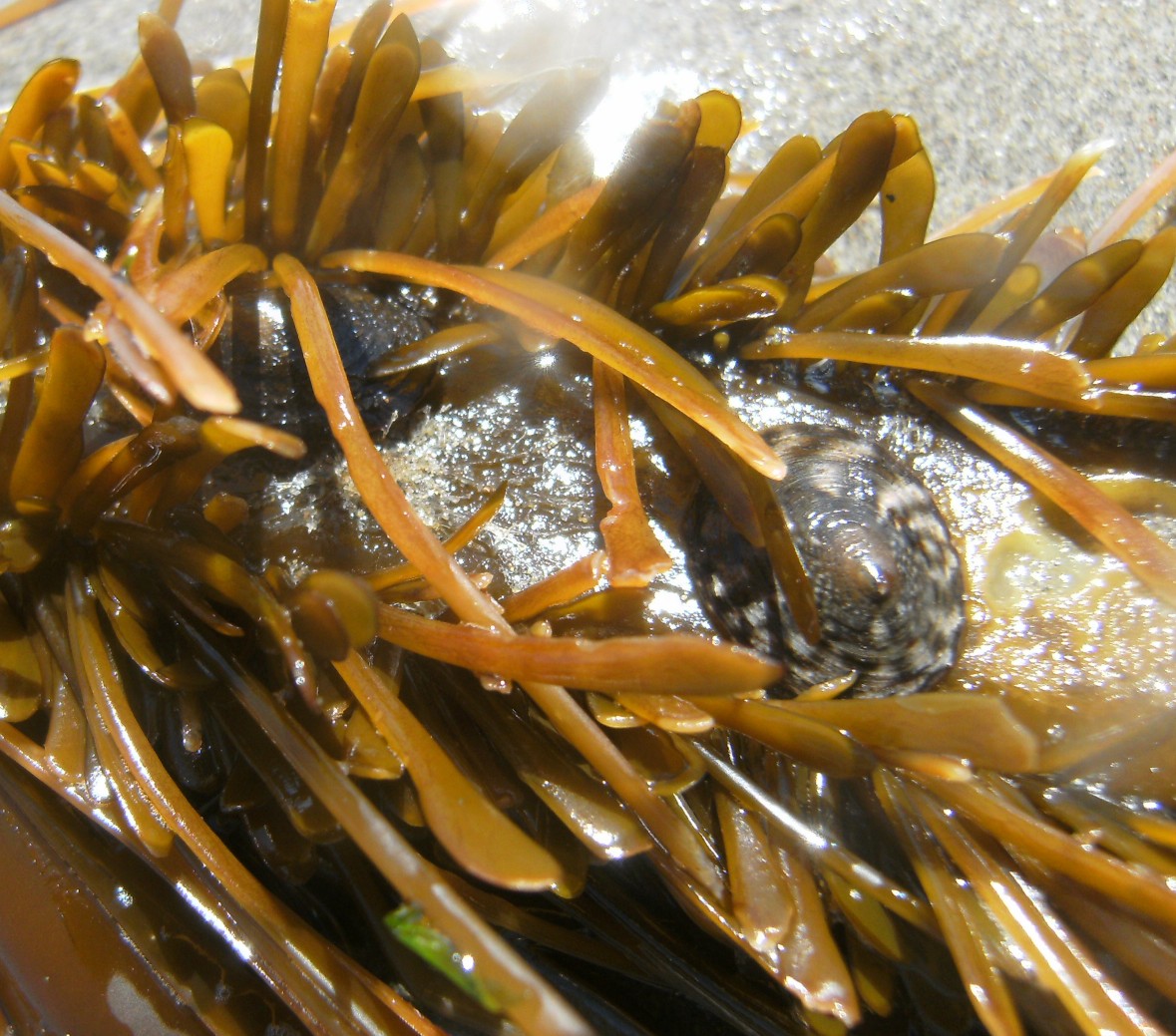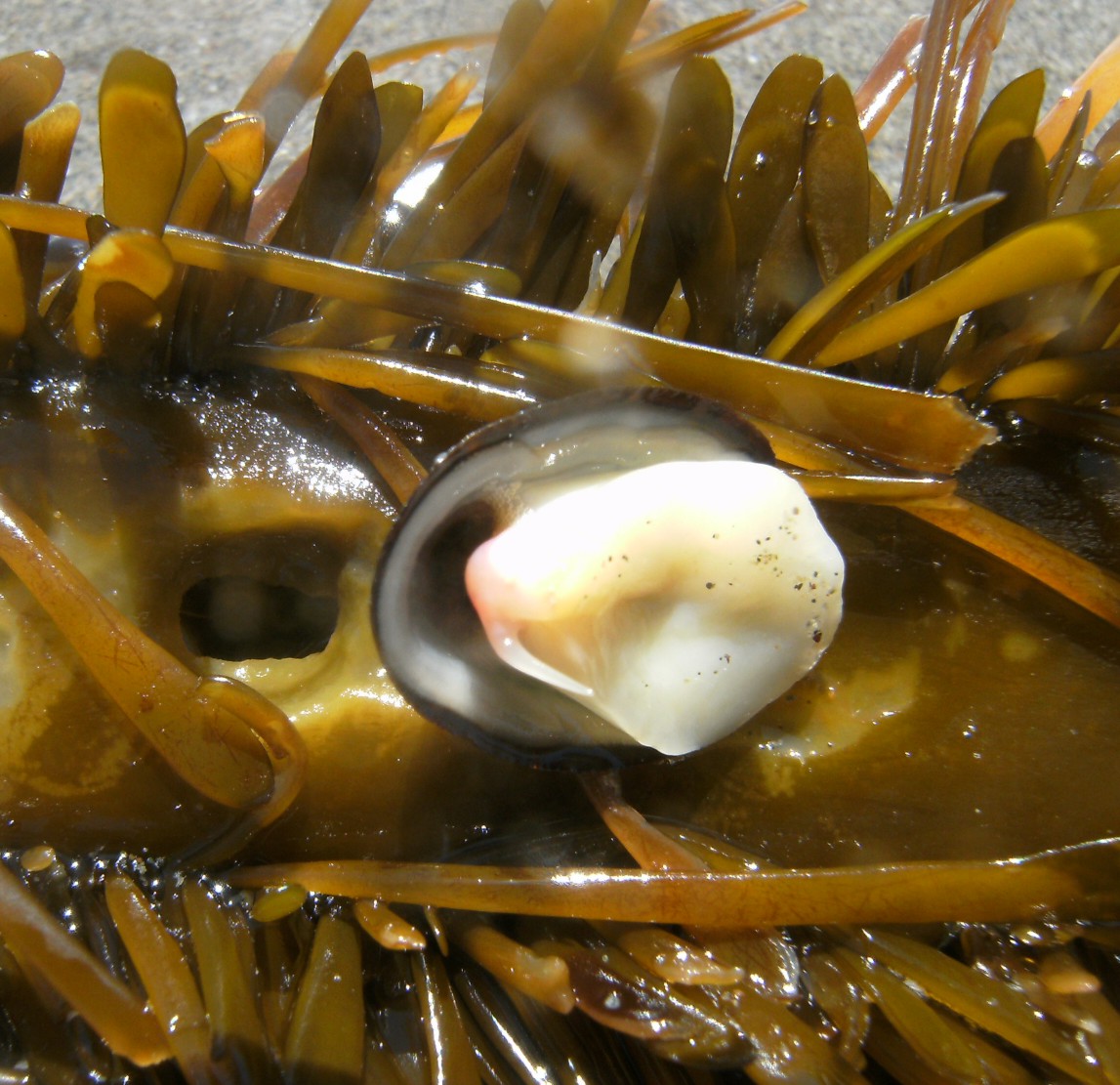Lottia peltaShield Limpet |
|
|
Synonyms: Collisella
pelta
|
  |
| Phylum Mollusca
Class Gastropoda Order Patellogastropoda Family Lottiidae |
|
| Left: Top view of Lottia pelta with
barnacle.
Right: Interior of Lottia pelta shell. |
|
| Photo by: Ryan Lunsford
2002
Collected at Rosario |
|
How to Distinguish from Similar Species: Lottia pelta can be easily confused with Tectura scutum. The distinguishing difference is the relative height of L. pelta as compared to the flat shell of T. scutum. Molecular evidence being prepared in 2008 (Brian Simison's dissertation, Berkeley, and Eernisse et al in prep.) suggests that from Monterey Bay southward the limpets identified as Lottia pelta are actually a sibling species.
Geographical Range: Alaska to Baja California (current work by Brian Simpson and Eernisse et al. at Hopkins Marine Station suggests that south of Monterey Bay the species is not L. pelta but an as-yet undescribed species).
Depth Range: Low to middle intertidal zones
Habitat: L. pelta is generally found in more protected locations on the rocks.
Biology/Natural History: The Lottia pelta diet consists of a large variety of both red and brown algae including Endocladia, Iridaea, Egregia, and Postelsia. However, it is most often associated with brown algae (Pelvetia and Laminaria in addition to those mentioned). These animals feed mainly at high tide, but do not feed at every high tide. Studies have shown that there is little competition for food between species of limpets. Perhaps this is due to slightly different enzymes and diets. Actually, even the diets of two individuals of the same species may vary according to the algae most available. It is in part this variability that accounts for the large variety of shell patterns and coloration. L. pelta has a definite and largely successful defense response to three species of predatory sea stars (Pisaster ochraceus, Leptasterias hexactis, and Evasterias troschelii). The limpet “runs” away by lifting its shell off the substrate and crawling at top speed.
This species is highly variable both in color and in genetics
(Begovic,
2003). It may actually be a group of related
species. Individuals
on rocks tend to be brown to brownish-green and often have ribs; those
on kelp are usually smooth and may be uniformly dark or variegated in
color
(see photos below). Individuals on Mytilus
mussels tend to
be uniformly dark. If individuals move between these
substrates the
pattern in the new growth of their shell changes to match that typical
of the species on their new substrate. Evidence suggests that
individuals
not colored typically for the substrate they are on may be subject to
higher
predation by black oystercatchers (Sorensen
and Lindberg, 1991)
| Return to: | |||
| Main Page | Alphabetic Index | Systematic Index | Glossary |
References:
Dichotomous Keys:
Carlton,
2007
Kozloff,
1987, 1996. Marine Invertebrates of the Pacific
Northwest.
University of Washington Press
General References:
Morris
et al. 1992. Intertidal Invertebrates of
California. Stanford
Univ. Press.
Niesen,
1997. Marine Life of the Pacific
Northwest. Gulf Publishing
Company, Houston, TX.
Scientific Articles:
Begovic, E., 2004. Population structuring mechanisms and diversification patterns in the Patellogastropoda of the North Pacific. Ph.D. dissertation, Dept. of Integrative Biology, University of California, Berkeley. 291 pp.
Denny, Mark W., 1985. Wave forces on intertidal organisms: A case study. Limnology and Oceanography 30:6 pp. 1171-1187
Sorensen, Fred E. and David R. Lindberg, 1991. Preferential predation by American black oystercatchers on transitional ecophenotypes of the limpet Lottia pelta (Rathke). Journal of Experimental Marine Biology and Ecology 154: 123-136
General Notes and Observations: Locations, abundances, unusual behaviors:
A student study at Rosario by Brittany Pick and Bethany Reiswig (2007) found that the black oystercatchers Haematopus bachmani nesting on Northwest Island are being selective in the limpets they capture. Although Lottia digitalis was the most common limpet found in intertidal transects on Northwest Island and were the species found at the highest tide levels so they should have been more available than any other species, they were not the most abundant in shell middens found near the oystercatcher nesting and feeding site. The oystercatchers selected Lottia digitalis less often than expected, and those they did select were near the maximum size range found in the intertidal. The oystercatchers seemed to prefer other, larger limpet species such as Tectura persona, Tectura scutum, and Lottia pelta, all of which were found by chi-squared analysis to be in significantly higher numbers in the midden than expected from the intertidal abundance. Whether this selection by the oystercatchers is due to a specific selection of species or simply a selection of the largest individuals present in the intertidal is not known.

The photos above and below show limpets keying to Lottia pelta,
found on Egregia kelp on the beach at San Simeon,
CA August 2010.
Photos by Dave Cowles

Note the mottled color on this individual, while the smaller, partly
obscured individual to the left and another in the photo above are
nearly
black on the outside of the shell. Outside coloration in this
species
is highly variable, reflecting the genetic variability within the
species.

The foot and viscera of the species are white. Photo by Dave
Cowles, San Simeon Beach, CA, August 2010
Authors and Editors of Page:
Ryan Lunsford (2002)
Editors: Dave Cowles 8-2002, 2007, 2008
Hans Helmstetler 12-2002
My thanks to Ryan P. Kelly for updated information on this page.